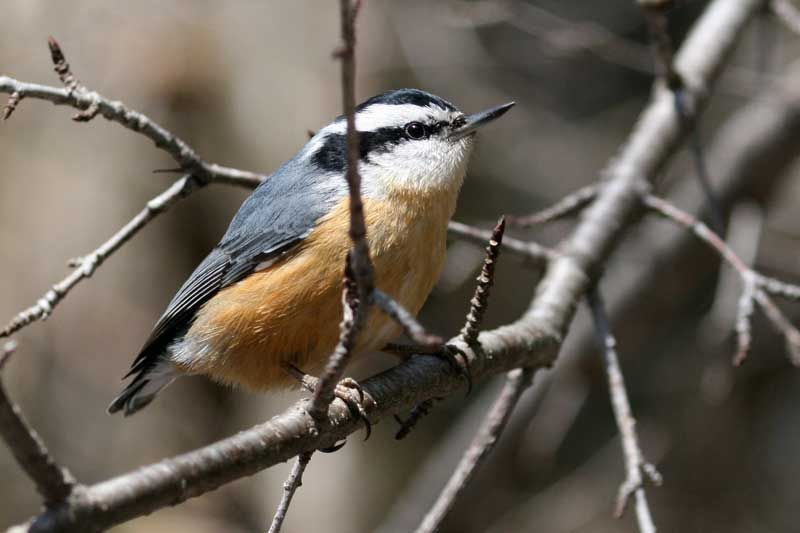Steve Blight | Jan 09, 2013
by Steve Blight
Heavy snowfalls since mid-December have sent many birds to feeders in search of food.
Redpolls, Pine Grosbeaks and American Goldfinches have been seen in good numbers at feeders this winter throughout eastern Ontario. Bohemian Waxwings are also plentiful this year, especially in urban areas where there is a good supply of berries and ornamental crabapples. Bohemian waxwings often stay further to the northwest during winter, where they feed on mountain ash berries. However the widespread drought last summer had a serious impact on the mountain ash berry crop, sending these handsome waxwings further east and south in search of food. Watch for them in stands of Redcedars as well, where they eagerly feed on the bluish berry-like cones.
Nuthatches are common visitors to feeders offering sunflower seeds. Both White-breasted Nuthatches and Red-breasted Nuthatches call our area home, although the White-breasted is a far more reliable visitor. The Red-breasted is a conifer seed specialist that moves south from northern areas in years when the spruce cone crop is poor, sometimes lingering in our area if food availability is good. However the White-breasted prefers deciduous forests and is much less prone to seasonal movements. It can be counted on to be in our area virtually every year.
There are about 25 species of nuthatches around the world, with most living in Asia. North America boasts four species – in addition to the White-breasted and Red-breasted there are two species that are not in our area – the Pygmy Nuthatch in the west and the Brown-headed Nuthatch in Florida and other parts of the southeastern U.S.
Both of “our” nuthatches are handsome little birds – the White-breasted has pale blue-gray upperparts, a glossy black cap and a black band on the upper back. The face and the underparts are white. Females have, on average, a narrower black back band, slightly duller upperparts and buffer under parts than the male, and usually (but not always) have a greyer cap. At about 13 cm (5 in) long White-breasteds are a touch larger than chickadees. The call is a low “yank-yank”.
Red-breasted Nuthatches have blue-grey uppers and cinnamon underparts, a white throat and face with a black stripe through the eyes, a straight grey bill and a black crown. Its “yink-yink” call, which has been likened to a tin trumpet, is higher-pitched and more nasal that the White-breasted. Measuring about 10 cm (or 4 in), they are slightly smaller than chickadees.
In general nuthatches are omnivorous, eating mostly insects, nuts and seeds. They forage for insects and other bird-goodies hidden in or under bark by climbing acrobatically along tree trunks and branches, sometimes upside-down. They forage within their territories when breeding, but may join mixed flocks at other times, often being seen with groups of chickadees. Their habit of wedging nuts and seeds into crevices and chopping them open with their strong bills, “hatchet-like”, gave rise to their English name. Nuthatches are relatively tame. I have coaxed both White-breasted and Red-breasted to land on my hand to accept sunflower seeds, although it is much easier with chickadees. Perhaps the deep snow might make these curious little birds a bit more willing to accept a handout from a helpful human!
Please feel free to report any observations to Lorraine Julien at This email address is being protected from spambots. You need JavaScript enabled to view it. or Steve Blight at This email address is being protected from spambots. You need JavaScript enabled to view it.
More Stories
- Province clarifies stance - Says Private Well Water Testing Will Continue
- Frontenac County Stays Internal for CAO - Appoints Kevin Farrell
- Addington Highlands Tax Bill Going Up 6.93%
- Perth Road United Church Donation to The Grace Centre
- 21 Years Of Dump Life Left At South Frontenac Waste Site
- Eclipse 2024 – Once In A Lifetime
- National Tourism Week
- NeLL Spring Open House and Anniversary Concert
- 25 years at Bishop Lake Outdoor Centre
- Grounds Contracts Down, Custodial Contracts Up In Central Frontenac

